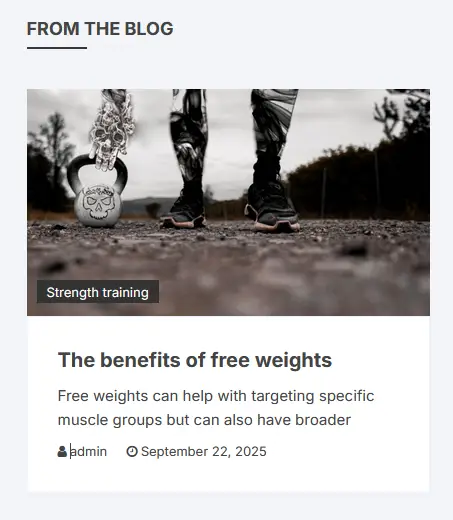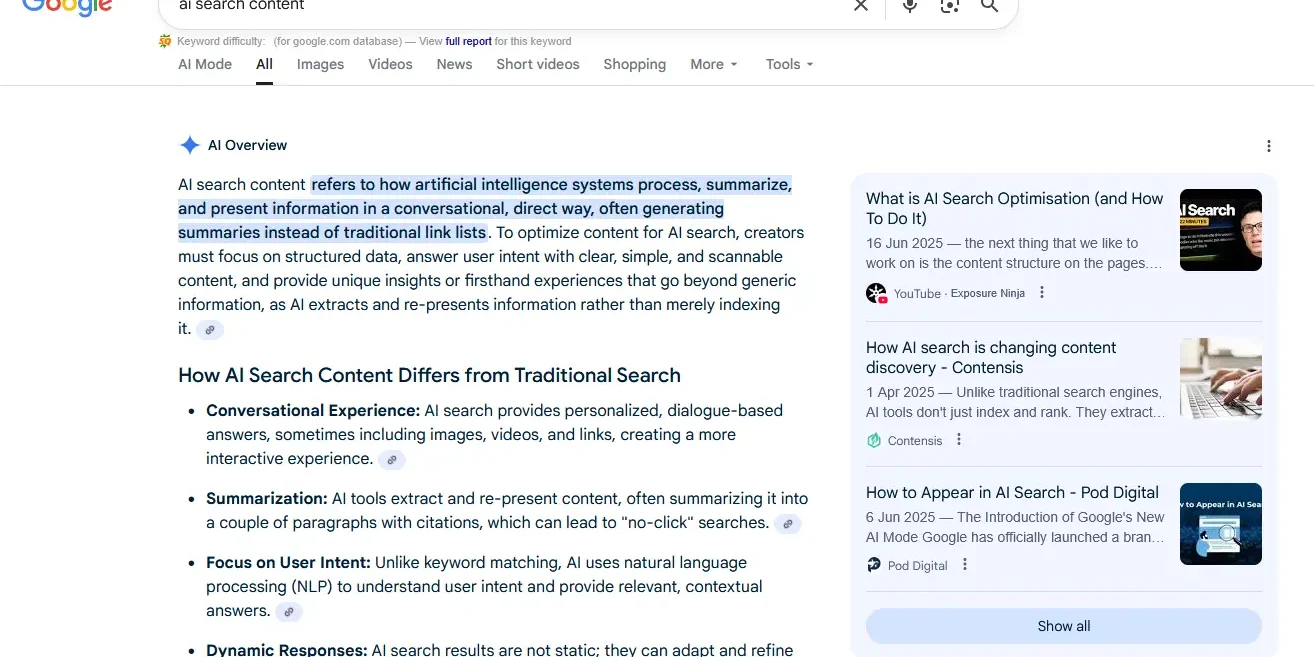You need to make your website more AI friendly by continuing to produce great content but also editing the structure, presentation and layout.
The world of search engines and search results is changing with the advent of search results. Many of us have used AI search already as commonly searched for terms usually bring up results in the following order:
- AI overview – large section with summary and links to the most relevant websites.
- Sponsored – links to websites that have paid to be featured and clicked when someone searches a particular keyword.
- Businesses – relevant business that may be able to help with your search query.
- People also ask – features frequently asked question relating to the search topics.
- Organic search results – websites that are presented in order of relevance as decided by Google’s search algorithm.
- Videos – relevant videos from You Tube and other video streaming websites.
- Related topics – other search terms that may be relevant.
This means that search results based on web content or videos are presented in very different formats and it appears that search engines operate in a very different way now than previously.
So how should you change your content to make it AI friendly?
Well the good news is that Google will continue to reward original, high-quality content that demonstrates qualities of what they call E-E-A-T: expertise, experience, authoritativeness, and trustworthiness.
That said you might still need to restructure your content to make it more AI friendly:
#1: Using short, scannable answers (especially in the first 1 – 2 lines)
You need to make it as easy as possible for AI tools to find quick answers to common questions in your content.
Make sure you answer your question within the first 2 lines after your heading.
For example you might be doing a blog on free weight training at a gym or home.
Free weights can help with targeting specific muscle groups but can also have broader…
#2: Use subheadings and lists
Easy-to-read formats are the best.
This means using short paragraphs (only 1 – 2 sentences), subheadings, and frequently using bullet points and lists to break up the text.
For subheadings, you need to follow the H1, H2, H3 format. Your H1 is the title of your post and should contain your target keyword. H2s are for each major subtopic, H3 subheadings elaborate further on H2 subtopics, and so on.
#3: Citing authoritative sources
Generative AI tools want to see you reinforce your claims with reputable online sources.
Whenever possible, try to find sources from .gov and .edu sites, as these carry the most trust. That’s not to say that you can’t use a .com as a source; you should just confirm that it’s trustworthy.
#4: Using structured data (schema markup)
Structured data is a standardized format for the following:
- A) classifying page content (like product descriptions and reviews) and
- B) providing information about a page.
Schema is important for AI tools and web crawlers because it helps them better understand content. For instance, structured data for reviews lets an AI tool instantly know that the content is reviewing a product or service.
Schema also increases the chances that your brand will be featured in AI Overviews, GAI responses, and SERP features like snippets.
#5: Use simple language over jargon
Industry jargon isn’t just a turnoff to potential customers, it can also confuse GAI tools.
For this reason, you should always favour simple language over jargon.
#6 Use visual rich content
Break up your text with relevant rich content such as images, tables, infographics, bullet lists and ordered lists. These help human and AI tools understand your content quicker.
Remember to answer questions, solve problems or provide some other useful information that educates the audience.
Get in touch with Dinesh on 07941 686113 or contact us if you need help on web design, web hosting, SEO services or domain names.


